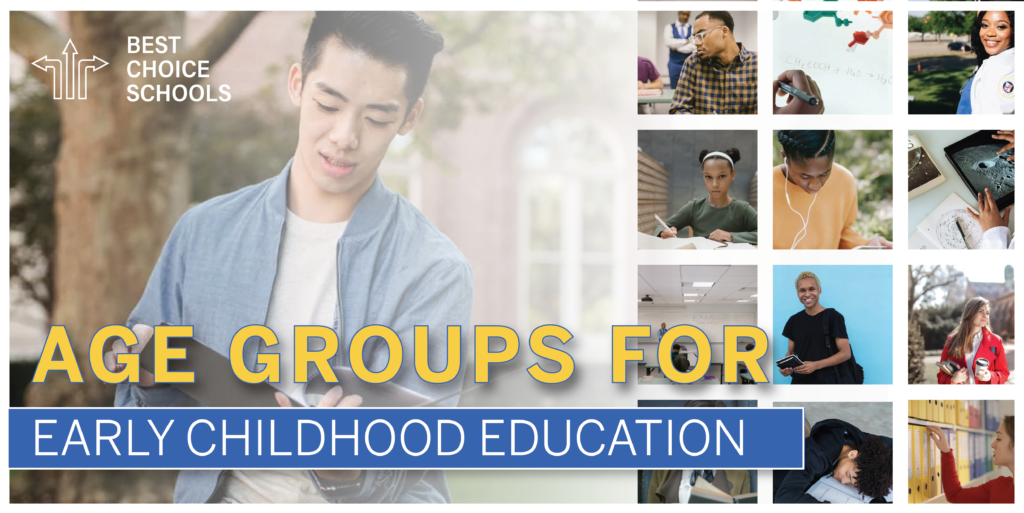Early childhood is a vague period of development that means different things in different contexts. In terms of early childhood education, this refers to children up to and including the age of eight. The first eight years of a child’s life are marked by more growth and changes than the child will ever again experience naturally within the same span of time. It is crucial that early childhood educators understand the unique complexities of the age groups they work with specifically. This article will detail each stage of early childhood so educators know what to expect.
Birth to Two
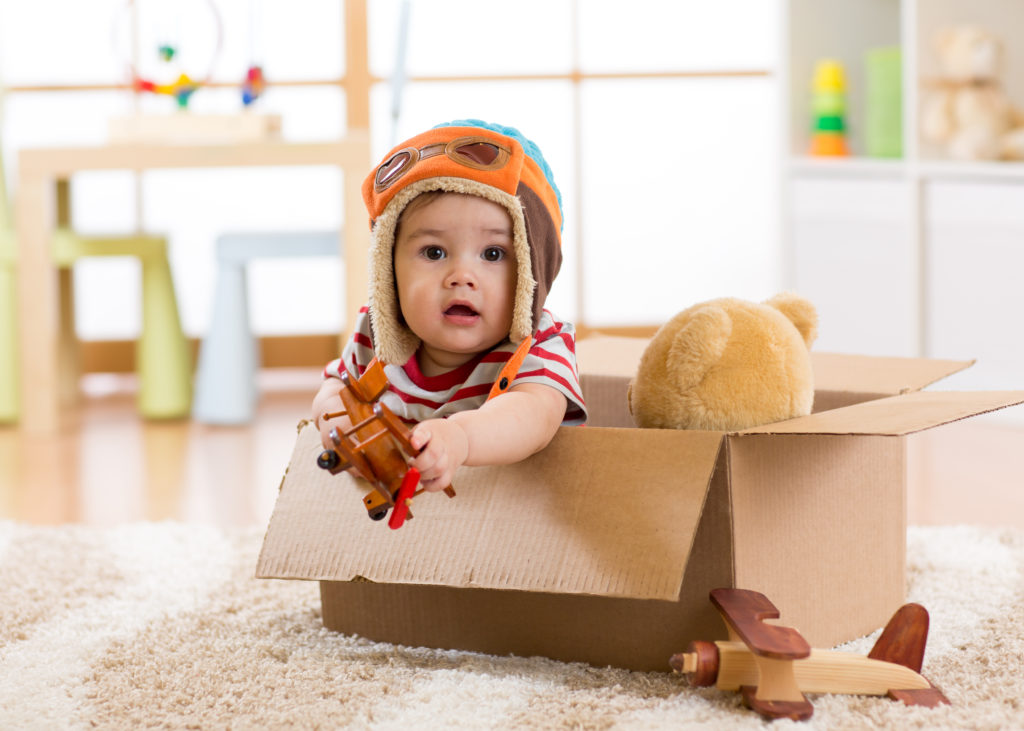
People do not normally think of newborns and infants requiring education. However, there are entire degree programs devoted to producing early childhood educators who specialize in this stage. Think about everything that parents hope to see their children learn during their first two years of life: emotional regulation, social skills, motor skills from holding up their heads to walking, first words, and the list goes on and on. These tasks come somewhat naturally to infants, but they emerge from the process quickly and with more confidence when they have regular access to people trained in supporting them through it, according to Zero to Three.
Developmental Milestones
During the infant and toddler stages (typically age groups for daycare), there are a lot of developmental milestones. At this time, it is all about developing fine motor skills. Everything from reaching and grasping objects to vision and hand-eye coordination becomes more fine-tuned during this time.
Birth to Three Months
- Arm movement
- Hands to mouth
- Opening hands more often
Three to Six Months
- Holding objects
- Pushing up using arms (when on belly)
- Momentarily holds small toys
- Can follow an object with eyes
Six to Nine Months
- Holds toy to mouth
- Hands are relaxed when open
- Bangs toys, moves arm
- Moves toys between hands
Nine to Twelve Months
- Releases toys voluntarily when asked
- Can put toys in a container
- Points with finger
Twelve to Eighteen Months
- Waves bye
- Claps hands
- Hold and scribble using a crayon
- Hold and use cups and spoons
Eighteen to Twenty-Four Months
- Stack blocks
- Hold crayons properly
- Move through book
Resource: 20 Best Online Schools for Early Childhood Education 2017-2018
Three to Four
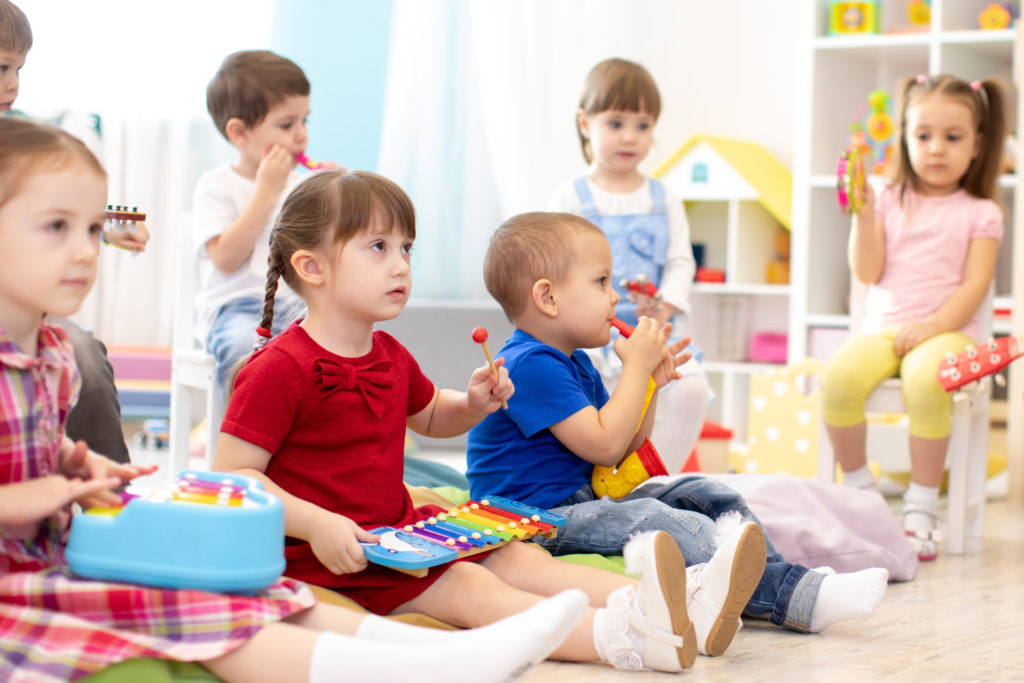
The next stage of early childhood development happens between the ages of three and six. This phase of early childhood education is commonly known as preschool. Preschool prepares children cognitively, emotionally, and socially for entering school. If you belong to a culture that you would like your children exposed to, there are many culture-based preschools that incorporate all of the other aspects for successful learning at this stage, according to EdSource.
Developmental Milestones
Children begin to discover their imaginations during the ages of 3 and 4 years (the age groups for preschool). And there is a long list of developmental milestones, including movement, language, cognitive, and social/emotional. Let’s touch on a few of the big ones.
Movement
- Agility increases
- Balance improves
Language
- Speaks sentences of 5 to 6 words.
- Speaks clearly.
- Shares stories using imagination.
Cognitive
- Can name some colors
- Develops a sense of time
- Begins to understand counting and numbers
Social/Emotional
- Plays using imagination
- Dresses and undresses
- Shows independence
- Engages with other children
Five to Eight
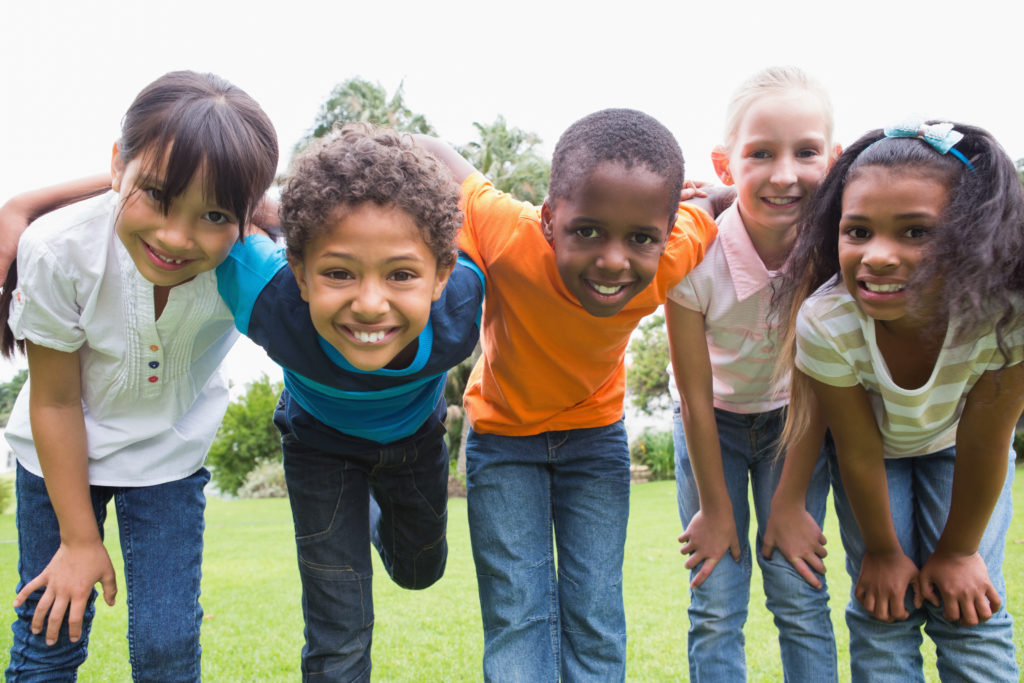
The final stage of early childhood is marked by the entry into elementary school. Early childhood educators of this age group focus on laying a core intellectual foundation on which children will build the remainder of their academic careers. Elementary school teachers are also responsible for guiding children through the processes of developing strong behavioral and social skills.
This is also the time when most childhood mental health and learning challenges begin to present, so elementary school teachers must be prepared to provide or incorporate these children the unique services they need in order to experience academic success and rich social experiences. For most children, school days are their first exposures to spending long and consistent periods of time with adults other than family.
Developmental Milestones
School-age children are still experiencing a lot of developmental milestones, especially when it comes to gaining independence from family. Developing confidence and increasing social and physical skills are dominant during these years.
Social/Emotional
- Increased independence
- Desire to be accepted and liked by others
- Understands teamwork
- Develops a better understanding of friendships
Thinking/Learning
- Better ability to talk about thoughts and feelings
- Greater focus on those outside of the self
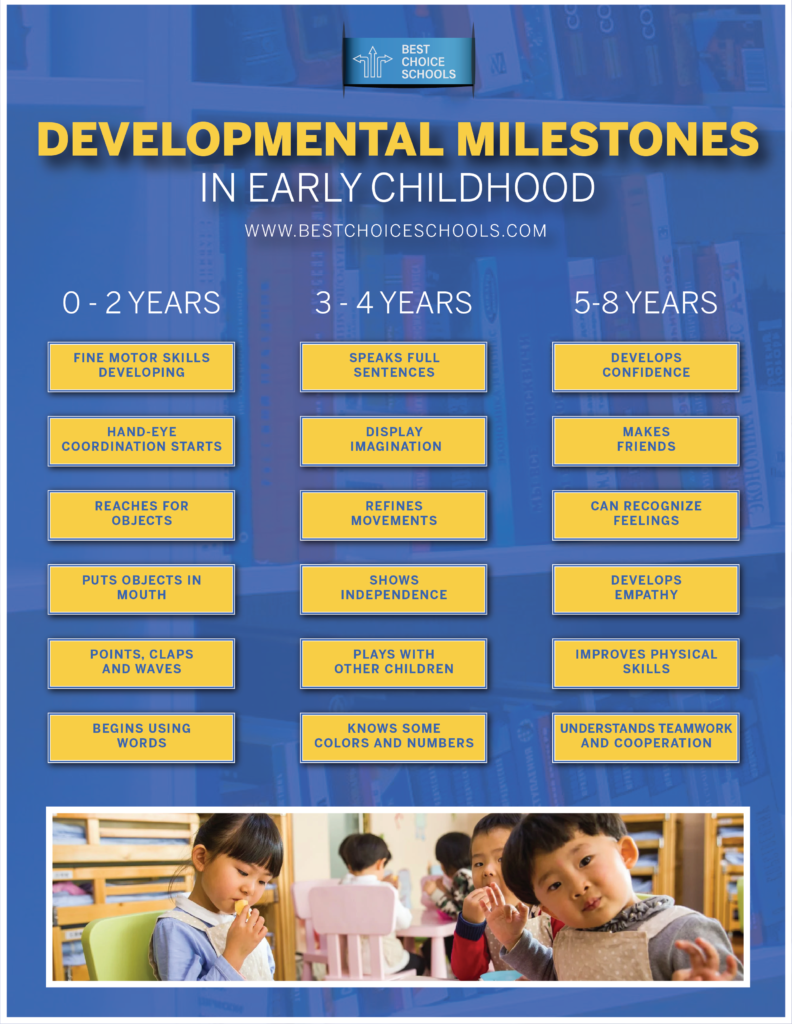
Learning Philosophies
There are many different learning philosophies amongst age groups for early childhood education. However, four seem to stand out from the rest — Montessori, Reggio Emilia, Emergent, and Play-Based. Each offers different learning experiences for young children.
Montessori
The philosophy behind Montessori is that the child is eager to learn and will initiate this learning independently if the environment is conducive to it. It is about nurturing the child’s natural curiosity and quest for knowledge.
The idea behind this philosophy is that it gives children a strong sense of self that, if developed early, will carry them through a thriving life.
Reggio Emilia
Like Montessori, Reggio Emilia is another child-driven approach to learning. This philosophy focuses on the individual student’s interest, allowing the teacher to work side by side with the student rather than appear as an authoritative figure.
Reggio Emilia learning involves all the senses, so movement and flexibility is a must. This means that these classrooms aren’t traditional but are wide-open community-type spaces that have no set structure.
Emergent
The Emergent philosophy has a bit more structure than the other two, as the teacher directs students to projects unique to their interests. They are planned activities, but what one student is working on may differ from another student or group of students.
It is a thoughtfully planned curriculum with lots of teacher observation.
Play-Based
Play-Based Education is void of the rigid structure that traditional preschools offer. But it is not all play. Instead, real life is incorporated into the play in order to develop skills and knowledge. It holds the interest of the students while providing meaningful lessons.
Play-Based teachers turn things like learning vocabulary and phonological awareness into an engaging activity or game.
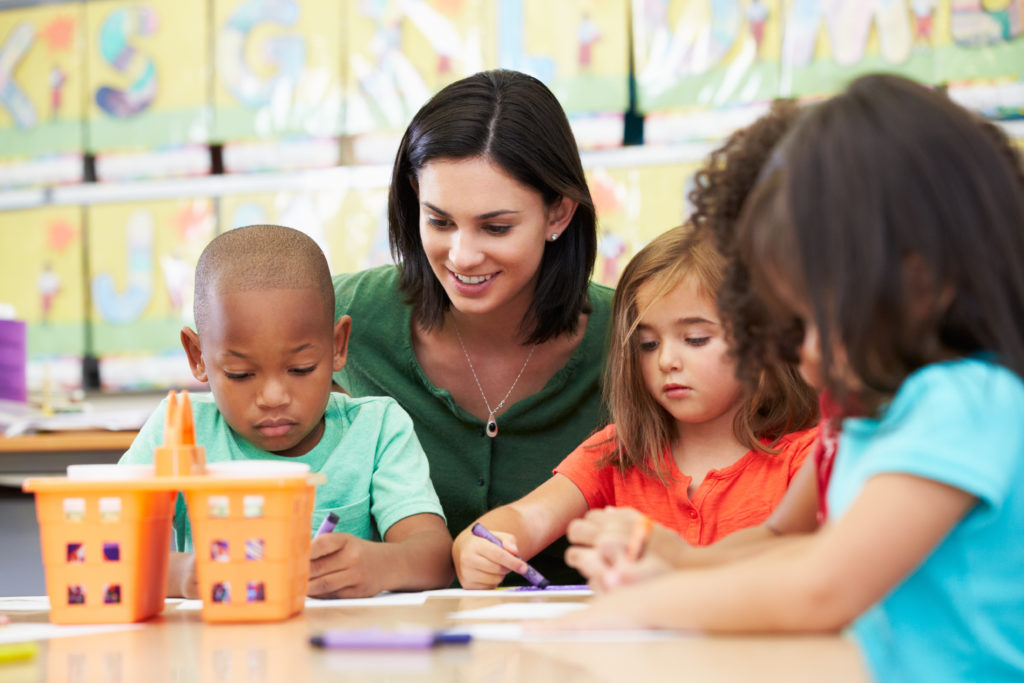
Pros and Cons of Mixed Age Groups in Early Childhood Education
Montessori and others have been lumping kids of different ages in classrooms for years. Some believe it works well, developing leaders and problem-solving skills. Others question its effectiveness. Are mixed age groups in early childhood education the way to go? Let’s take a look at the pros and cons.
Pros
- An enhanced social setting with different levels of needs and abilities.
- Provides a boost in social and emotional skills.
- Better language skills due to interpersonal communication amongst different age groups.
- Potentially higher levels of cognitive development.
- Allows students to become leaders and mentors to their peers.
- Develop a closer relationship with long-term teachers.
- Individual-paced learning side by side with others.
- Lack of rigid structure and detailed lesson plans.
Cons
- Concerns that older children are not being challenged enough.
- Concerns that younger children are being too challenged.
- Teachers may not have the proper training to handle multiage classrooms successfully.
There are a lot of mixed reviews about the impact that multi-age education has on early learning. While there are cons, the consensus seems to be that these types of classrooms can be very beneficial – especially for the younger students.
The setting also plays a part in whether or not a multiage classroom is a successful option. For instance, schools designed to be multi-age from the beginning have teachers who are trained to handle classrooms of a mix of ages. They also seem to do well in boosting the confidence and leadership skills of their students. However, a multiage classroom in a regular school setting may be viewed as a dumping ground for struggling students, causing a downfall in self-esteem. In this setting, traditional teachers are thrown into the new environment without knowing how to create a thriving environment.
As with so many things, educational tools and different early childhood education teaching philosophies can be very beneficial if executed correctly.
How Can Educators Help during Each Stage of Development in Early Childhood?
Those who are interested in teaching students in the early childhood stages need to learn developmentally appropriate practices to make their teaching more effective. These practices entail a vast range of strategies and skills, all grounded in the compassionate and loving relationships that educators have with the kids they teach. In this section, we’ll go over some of the most important ways teachers can support children during each stage of development
Educators Demonstrate Their Commitment to Teaching through Their Own Actions
Teachers recognize that their own sense of curiosity, attitudes, and actions are an essential aspect of teaching, and they model these skills to the learning community as a whole. They know that children will develop the confidence, skills, and even disposition to become lifelong learners by their example.
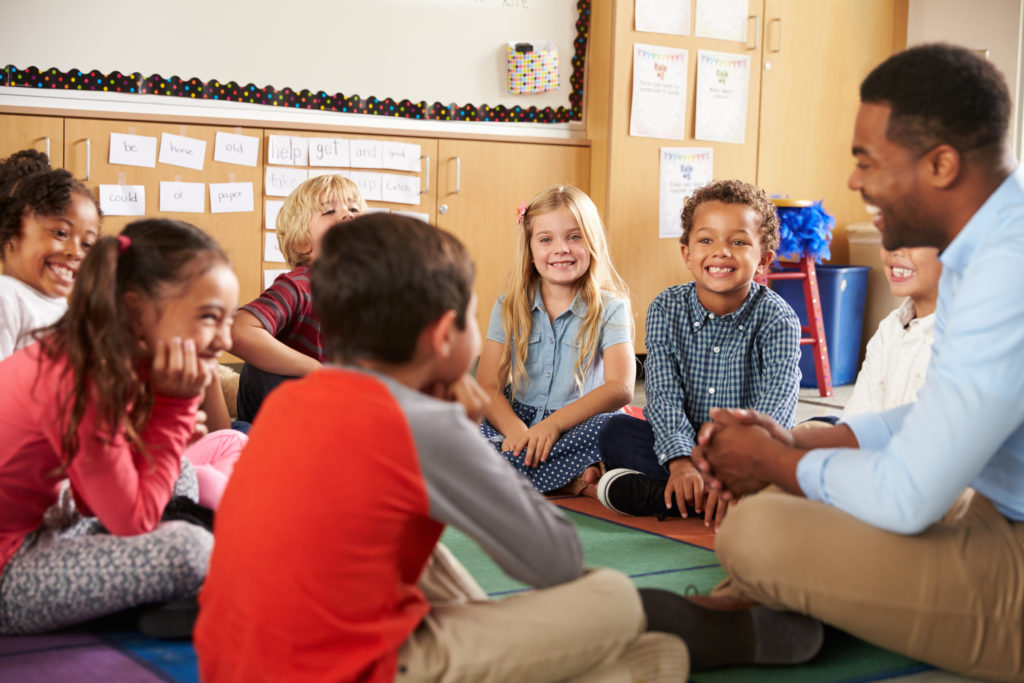
Teachers Get to Know Each Child and the Family of the Students They Teach
• To create a community of learners, educators must make the learning experience meaningful for each child. Learning needs to be responsive and accessible to kids and their families in a relatable way.
• Teachers should build a relationship with each child and family they work with
• Design activities and lessons that are culturally relevant and bring the child’s language and native culture into the learning community. They should demonstrate value for the unique contribution each culture brings to the classroom and should strive to support a child’s connection to their home culture, language, and family.
• Incorporate a broad range of materials, strategies, and experiences to accommodate children’s needs and individual differences, keeping in mind their student’s needs, interests, languages, and abilities, as well as their different stages of development.
• Be prepared to customize teaching strategies to meet the needs of children who have disabilities as well as those children who are more advanced with their learning. They should develop relationships with professionals and specialists to ensure that each child gets any specialized services, accommodations, or adaptations to support their learning.
• Give each child the opportunity to participate in every activity and encourage inclusiveness, cooperation, and kindness among peers so that every student can share in the experience.
Educators Implement a Universal Curriculum So Each Student Can Meet Their Individual Goals
• Teachers need to ensure that the curriculum meets competencies for general learning in subjects like language, literacy, social studies, art, science, music, health, physical education, and mathematics. Each child should have multiple easy of learning and understanding.
• Educators also monitor that the developmental milestones for each child are on track, including linguistic, cognitive, physical, emotional, and social goals. When it appears that a child is not meeting these goals, the educator needs to work with the child, the family, and the rest of the learning community to come up with a solution.
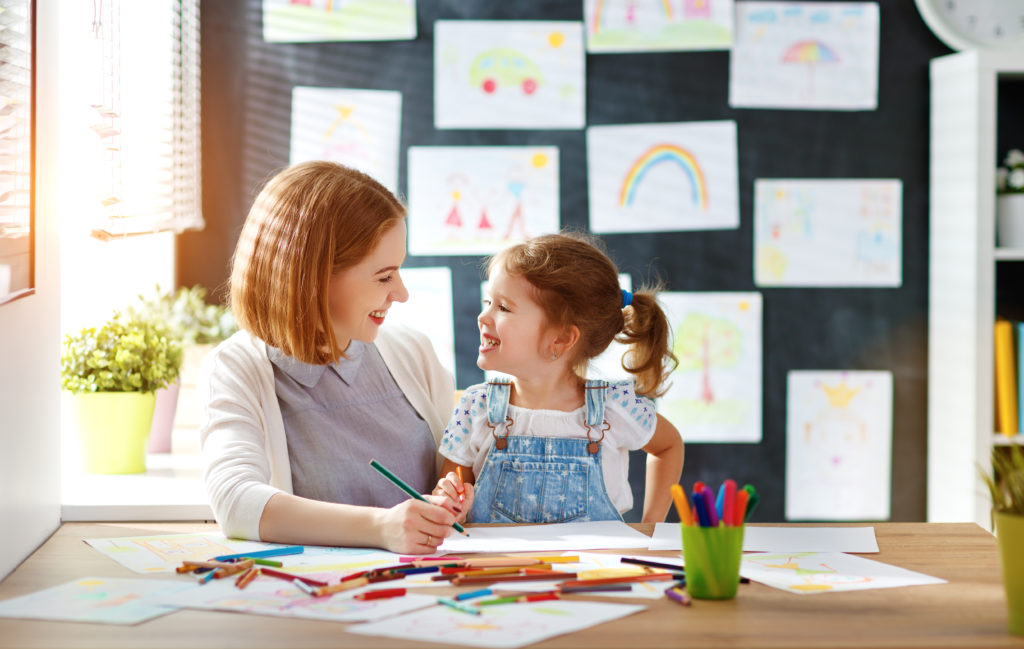
Educators Create a Consistent and Predictable Daily Environment That Encourages Growth
• Teachers create a predictable and consistent schedule that includes a daily plan for activities that meet children’s learning and developmental goals. They ensure that the program invites active exploration and learning and is creative and stimulating so that each child will remain engaged. The daily schedule should reflect the skills and competencies that each child brings to the classroom.
• Educators ensure that children are given frequent opportunities to make choices. Kids should be encouraged to help plan specific activities and identity projects to help them in their own learning. They should be given regular chances to choose between activities, and teachers should guide children who are not yet able to make decisions to build their self-confidence.
• Wherever possible, teachers should support multilingual or bilingual children by using multiple languages, and they can also utilize nonverbal cues like gestures and images.
• Teachers should provide ample opportunity for students to engage in play and foster imagination, interaction with peers, and self-regulation. Playtime also gives educators the chance to observe children’s developmental skills and assess where they are at.
Activities for Various Age Groups in Early Childhood Education
The opportunities to help children with their growth and development based on their particular age group are virtually endless. Thousands of resources exist that can give teachers some ideas to help build each child’s assets to the fullest. In this next section, we provide some resources to help educators fill their daily schedules with the most appropriate activities for each group.
Developmental Activities for Children Aged Birth to Two
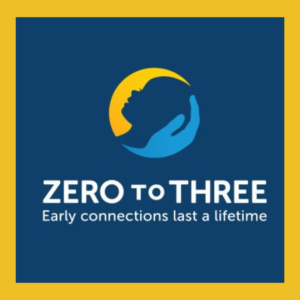
Zero To Three is an organization dedicated to ensuring all babies and toddlers get a strong start in life. One of the primary goals of this group is to see that this age group benefits from family and community connections that are crucial to their development and well-being. The website has a number of different resources for this age group, including activities that can help with brain development, infant and early childhood mental health, play, language and communication, social skills, and more.
Developmental Activities for Children Aged Three to Four
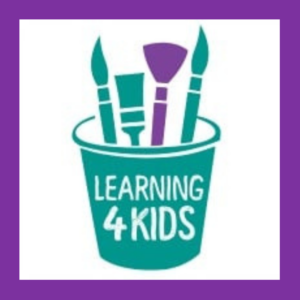
Learning 4 Kids is a website developed by Australian Pre-Primary Early Childhood Teacher Janice Davis. The site is full of project ideas for fun and engaging activities for children aged three to four years old. Topics covered include literacy, motor skills, exploration, creativity, and more. Each activity includes a list of materials, step-by-step instructions, and a list of developmental skills addressed via the activity.
Developmental Activities for Children Aged Five to Eight

Gryphon House is a distributor of children’s and teacher’s resource books established by Leah Curry-Rood and Larry Rood in 1971. The website has a huge selection of paid educational products for all ages, but they also have an excellent library of free resources. One of the great things about this site is that you can sort activities by subject and age group. For example, you can find literacy activities for elementary-age students or activities that foster social and emotional skills in preschoolers simply by using the drop-down menu.
Closing Thoughts
Early childhood is a dynamic period for young humans. It requires academic services tailored to the needs and experiences unique to each stage of development. Whether you are a parent, interested in becoming a parent, or are considering a career in early learning education, you now have a basic understanding with which to make some important decisions. Children are our future, and that future begins with early childhood education.
You might also like:
